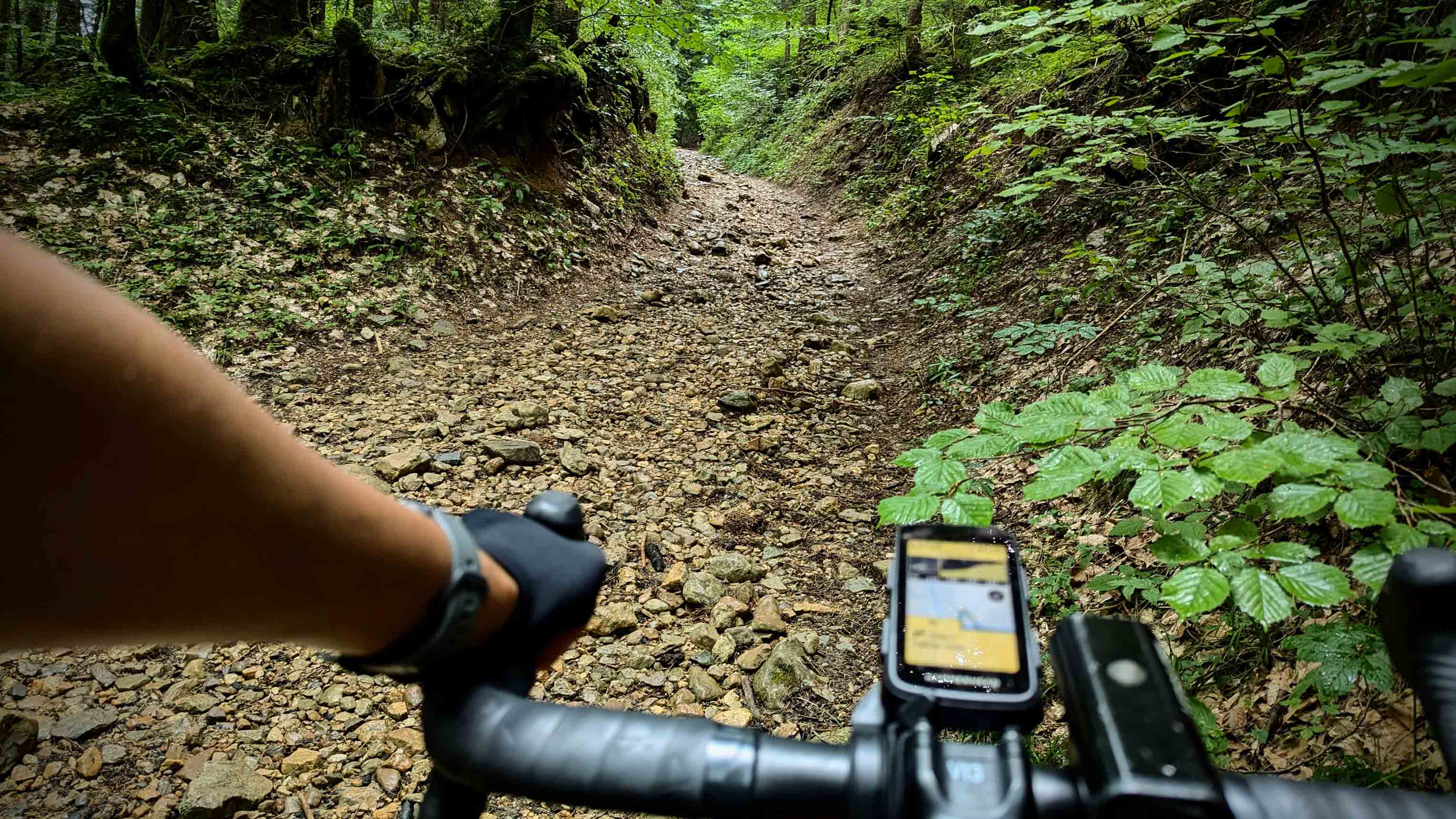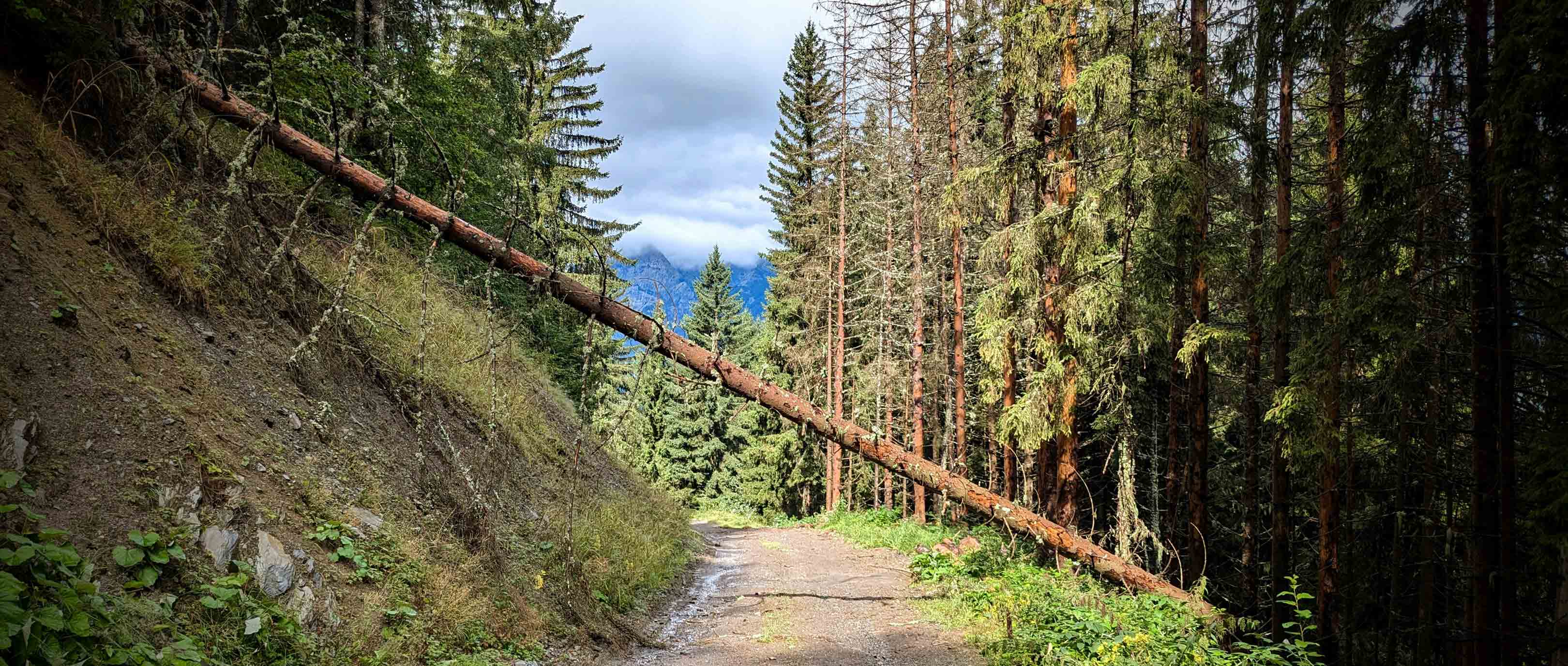This August, Shimano Gravel Alliance rider Dalila Lecky, planned a short trip to the edge of the French Alps, primarily intending to investigate the gravel potential of the trails around the Chartreuse Massif, but also drawn by the proximity to the final stage of the 2024 edition of the Tour de France Femmes. The probability of encountering some decent summer weather, which has been noticeably missing from the UK this year, was also a significant factor. Read on if you’d like to find out how she got on….
“When doing this sort of trip, there are always a bunch of unknowns.”
I arrived in Lyon on a Wednesday evening and within an hour of my arrival, a thunderstorm also arrived. It appeared that I had brought the great British summer along with me. A quick train transfer to Grenoble followed, my main base for the next four days. Luckily, the rain didn't follow me.
On my first day, I went for a short warm-up ride to check out the terrain. The routes I had planned for this trip were of my own creation, drawing on years of map reading and route curation experience. When doing this sort of trip, there are always a bunch of unknowns. Is the terrain going to be gravel, mud or rock? If it is rocky, how big will the stones be? Will the ground conditions make that gradient unrideable? Planning a shorter ride for the first day allowed me to gauge the typical terrain of the region, with a lot of leeway if anything unexpected happened.
The first hill out of town was incredibly steep, immediately so. And it didn’t ease off. The challenging gradient seemed to go on forever. I could barely enjoy the views over the city as I made my way up the climb. I eventually made it to the car park of Fort de la Bastille, but instead of heading to the historic site, I continued the climb up a rocky trail. The first few hundred metres weren't rideable - the rocks were too big and the gradient was still very steep. But then I turned a corner and the rock size and gradient decreased enough to remount the bike. That's not to say it was easy - getting up this climb took a decent amount of skill and experience. And that was pretty much the theme of the whole day, but particularly on some of the descents. Sometimes, I had no alternative but to walk down a steep, rocky trail or do a U-turn and make a big detour. I never chose the latter, preferring to find out how unrideable each trail was. In hindsight, I reckon I could have ridden most of the ones I walked, but a solo trip far from home was hardly the time to take risks.
“I had to remind myself that the primary purpose of this trip was to pick a bunch of trails and find out if I could traverse them on a gravel bike.”
I had to remind myself that the primary purpose of this trip was to pore over the maps, pick a bunch of trails (many marked for easy mountain biking) and find out if I could traverse them on a gravel bike. If I had to guess, I’d say the route on the first day was 95% rideable, but it ultimately depends on the rider's skill and experience. Overall, it was a great acclimatisation ride with a good mix of climbing and off-road variety. Given the chance, I would ride it again, although I’d probably look for a shallower route up to that first trailhead.
The second day consisted of a big loop in the Chartreuse region. The first climb, up to Col de la Charmette, was a quiet, steady, tarmac road through the forest. Given the extent of climbing to be tackled over the day, this was a deliberate routing decision. However, the descent over the other side of the col was quite different. The path was unmaintained, the tarmac had fallen into disrepair and some sections were simply unpaved. However, it was just the right amount of fun on a gravel bike. Three well-signed tunnels were on the descent, but none were illuminated, so I was glad I had my super bright front light mounted. I was aware of a few road tunnels along this route, so I also brought my rear light with me for safety. By the time I reached the bottom of the first descent, I didn't need food or drink, but if I had, a slight detour to Saint-Laurent-du-Pont seemed like the ideal option.
“About two-thirds of the way up, the route took me off-road the rest of the way to the top.”
The second climb of the day, up to Col de Porte, started almost immediately after the first descent and initially, it seemed like it was also going to be entirely paved. However, about two-thirds of the way up, the route took me off-road the rest of the way to the top. There was a small tarmac interlude at Cherlieu, where a fountain with clean drinking water provided an ideal location to refill an empty bidon.

As I neared the top of Col de Porte, the trail I was riding along started to look more like a dried-up river bed, peppered with pebbles and small rocks. At the top of the climb was a biathlon training facility, an out-of-use ski lift and, more significantly, several restaurants and bars, perfect for taking a well-earned break. Next, it was almost all downhill to the finish. In search of shortcuts between villages, there were some more tricky trails to contend with. But also, as a little sting in the tail, there was a 2km long 10% gradient climb before the last descent back to Grenoble.
“The warmth of the late summer and the exertion of the climb made me reluctant to put on my rain jacket.”
The third day was the transfer stage. I rode my bike from Grenoble to Oz with all my essentials packed into bikepacking bags. The route was mostly paved and the unpaved sections were relatively easy, which was a relief considering all the extra weight I was carrying. I left the city following a bike path along the Drac and soon found myself on more busy roads than I would have liked to include in the route (the ideal number is zero). But there was also an abundance of cycle lanes (some entirely segregated) and a good standard of driving throughout. Ultimately, it was alright. Besides, there were few alternatives for this A-to-B route. It was also quite scenic, especially as I approached Allemond alongside the Romanche. As I finally climbed the road towards Station d’Oz en Oisans, it started to rain. The warmth of the late summer and the exertion of the climb made me reluctant to put on my rain jacket, but I eventually relented and was glad that I did because the rain kept me company to the finish.

The fourth and final day of riding was the reason I had come to Oz - it was the day of the final stage of the Tour de France Femmes. I had challenged myself to get up Alpe d'Huez to watch the closing moments of one of the year's most prominent stage races.
“Before this trip, I'd never been up Alpe d’Huez’s 21 bends. And I still wasn't planning to.”
Before this trip, I'd never been up Alpe d’Huez’s 21 bends. And I still wasn't planning to. So, how would I get myself and my bike up to the finish of the TdFF? I took an alternative route up and around La Grande Sûre from Oz. Why didn't I just go up the famous road climb? This trip is part of a slowly developing collection of routes I've created or adapted, best described as ‘explorations into the limits of gravel cycling’.
This final route was the most exciting among the four I plotted for this trip. It goes up to Alpe d’Huez on trails most commonly used by mountain bikers and skiers, but it is (mostly) doable on a gravel bike.
“The trail I ended up on didn't appear on my maps.”
The first part of the route from Station d’Oz took me past the ski lifts and across a section of the Megavalanche trail. After a short climb, I suddenly found myself forced to deviate from my plotted route. It was a deviation unlike any other I had ever experienced. The trail I ended up on didn't appear on my maps. I even turned back to see if I had simply missed a turn. But when looking up at the muddy, slippery, barely detectable path up through the trees that the map wanted me to follow, I ultimately decided that the best option was to stay on the trail that was clearly more suited to a gravel bike. In the worst-case scenario, I would reach a dead end or something else unrideable and have to turn around and head back to the start. And for once, I had more than enough spare time to do that.
“Perhaps there may have been a view worth stopping for on a clear day?”
This uncharted trail was so much fun to ride. Flowing gravel tracks took me steadily and scenically down to the road leading up to Villard-Reculas. And so, I was climbing on the tarmac again. After climbing up through Villard-Reculas, I exited the village and went onto the slopes of the Alpe d'Huez ski resort. A quick scan of the potential routes up the mountain indicated that my best option was to follow the path of the ski piste. It was far too steep for riding in a few spots, but these were shorter sections. Finally, I made it to the top of my last climb. There, I found a solitary bench. Perhaps there may have been a view worth stopping for on a clear day. Then came the descent through the low-lying clouds to the finish village, the end of the TdFF and the end of the penultimate ride of this trip.

The final ride was just a 60km downhill tarmac blast back to Grenoble, so I won't recap that here. I also won't give you a re-run of the closing moments of the TdFF. But I will say that if you didn't watch it, you've missed out on one of the year's most exciting and dramatic races. I was glad to have made the effort to be there in person and to have arrived there in such an unconventional way.
“Let's see where this trail goes.”
What I learned most on this trip, which I’ll apply to future adventures, is that I must remember to plan with more spare time and space for things to go wrong and leave room to say, “Let's see where this trail goes.” This thought often arises when riding either my home trails or exploring further afield and the constraints of day-to-day life make it difficult to follow through on, but here’s to hoping.
If you would like to try Dalila’s routes for yourself, you can find them here: